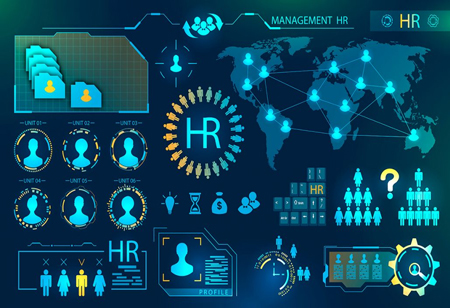THANK YOU FOR SUBSCRIBING
Be first to read the latest tech news, Industry Leader's Insights, and CIO interviews of medium and large enterprises exclusively from Hrtech Outlook
THANK YOU FOR SUBSCRIBING

By
HR Tech Outlook | Wednesday, July 31, 2024
Stay ahead of the industry with exclusive feature stories on the top companies, expert insights and the latest news delivered straight to your inbox. Subscribe today.
The modern digital workplace enhances productivity, communication, and collaboration by strategically using digital tools and innovative practices.
FREMONT CA: In today's fast-paced, technology-driven world, the digital workplace has become the new norm, transforming the way of working, communicating, and collaborating. Thriving in this modern environment requires a strategic approach that leverages various digital tools and practices to enhance productivity, foster effective communication, and ensure seamless collaboration. By understanding and implementing key strategies, organisations and employees can navigate the complexities of the digital workplace, maximise efficiency, and drive innovation.
Communication
Messaging is the cornerstone of collaboration in the digital workplace. Effective communication is facilitated through various tools such as email, instant messaging (IM), mobile messaging, and microblogging. These platforms enable seamless interaction among team members, fostering a collaborative environment essential for productivity and innovation.
Productivity
To enhance efficiency, employees rely on a suite of productivity tools. Word processors, presentation software, spreadsheets, and task management applications are indispensable for daily operations. Such tools streamline workflows, allowing teams to create, share, and manage tasks effectively, ensuring that projects stay on track and deadlines are met.
Collaboration
Clear and effective collaboration is vital for success in the digital workplace. Web conferencing tools enable virtual meetings and real-time communication between partners, clients, and employees. These platforms support various collaborative activities, from brainstorming sessions to strategic planning, enhancing teamwork and decision-making.
Sharing
Information sharing is a critical component of the digital workplace. Tools like blogs, intranets, and personalised homepages facilitate the dissemination of knowledge and updates within the organisation. These platforms ensure that employees have access to relevant information, promoting a culture of transparency and continuous learning.
Crowdsourcing
Crowdsourcing tools harness the collective intelligence of the workforce. Forums, surveys, polls, and ideation platforms enable organisations to gather employee insights, feedback, and innovative ideas. These tools support collaborative problem-solving and decision-making, driving organisational growth and improvement.
Applications
Various applications empower employees by providing access to essential tools and resources. Customer Relationship Management (CRM) systems are pivotal for managing client interactions and data. Additionally, Enterprise Resource Planning (ERP) systems, Human Resource (HR) systems, and expense claim applications allow employees to perform various tasks online. These applications can be web-based commercial off-the-shelf (COTS) solutions or custom-built using low-code and no-code platforms, ensuring flexibility and accessibility.
Mobility
Mobility is a vital aspect of the digital workplace, requiring easy access to tools from various devices. Remote scanners, laptops, and smartphones are essential for employees to perform their duties efficiently from any location. This flexibility supports remote work and ensures that team members can stay connected and productive, regardless of their physical location.
By adopting a culture of adaptability and encouraging employees to develop new skills, organisations can remain resilient in the face of rapid technological changes. Leveraging advanced tools and platforms enhances productivity and also promotes collaboration and innovation. Investing in employee well-being and creating an inclusive digital environment contribute to a motivating workplace. Ultimately, a forward-thinking mindset combined with effective digital strategies positions organisations for long-term success in a digital world.



